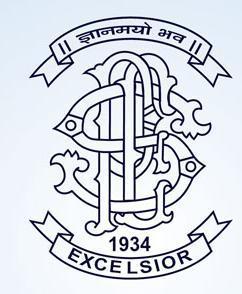JUVENILE JUSTICE SYSTEM: A
CONCEPTUAL DEVELOPMENT—
The noted Nobel Laureate Gabrial Mistral expressing his concern for child-care, long ago observed: “We are guilty of many errors and many faults, but our worst crime is abandoning the children, neglecting the foundation of life. Many of the things we need can wait, the child cannot, right now is the time his bones are being formed, his blood is being made and his senses are being developed. To him, we cannot answer
‘tomorrow’. His name is “Today.” In a civilized society, Children are a “supremely important national asset”2 and the future well being of the nation depends on how its children grow and develop.
The problem of juvenile delinquency is essentially not of a recent origin, and it has further increased, because children get easily attracted to temptations of life and leap into criminality. In order to curb such a situation, a Justice system had to be formulated. The early penology did not recognize any discrimination between adult
and juvenile offenders, so far as the punishment was concerned.3 The Juvenile Justice System in India originated during the British Rule and was a direct consequen4ce of development in the field of prison reforms and juvenile justice, that took place in the west . The history of Juvenile Justice System in India can be divided into five periods with reference to legislative or other landmark developments, as—
(i) prior to 1773; (ii) 1773- 1850; (iii) 1850-1918; (iv) 1919-1950; (v) post 1950.
(i) Prior to 1773, both the Hindu and Muslim laws had provisions for the maintenance of children. The primary responsibility to bring up children was that of parents and family.56
(ii) But, the period between 1773 and 1850 saw the colonial exploitation which had eased out the indigenous rural economy, forcing people to slums in suburbs. It also increased destitution and delinquency among
their children. Concerns for the welfare of such children were raised. Krishna Chandra Ghoshal and Jai Narain Ghoshal in 1787 pleaded to Lord Cornwallis, the then Governor – general in India, for establishing a ‘home’ for destitute children in the vicinity of Calcutta. The first ‘ragged school’ for orphans was established in 1843 through the efforts of an Englishman, Dr. Buist.
(iii) The Apprentices Act 1850 was enacted, during period of 1850- 1918 which enabled the underprivileged children to learn trades, crafts etc, to gain a livelihood. The Female Infanticide Act, 1870 and the Vaccination
Act, 1880 sought to secure life and health of infants; further, the Guardianship and Wards Act, 1890 made provisions for continued care and protection of children. Existence of child labor was recognized by the Factories
Act, 1881. The IPC, 1860 declared children below the age of 7 years as doli incapax, while the presumption of necessary mens rea can be questioned in the 7-12 age group.
(iv) One of the most significant developments in the history of juvenile justice system in India proved to be the Report of Indian Jail committee, 1919-1920. It undertook the exercise of overhauling the entire prison system,
by visiting numerous jails and reformatory schools in the country and abroad. The Report suggested that children with defective intellect should after examination of their physical and mental condition, be sent to institutions specially provided for them. For young offenders above the age of 15 years, it recommended Borstal schools. The Committee emphasized on the need of establishment of children’s courts with proceedings
‘as informal and elastic as possible’. The Children Acts of British India followed the same pattern—delinquent and neglected juveniles were to be dealt by the juvenile court, kept in remand homes and certified schools,
or released on probation, with a possibility of imprisonment when the nature of offence was serious and the character of the offender justify that. However, one of the major problems was that the age below which a person was considered as a child differed in at least six states. West Bengal and Gujarat had prescribed
18 years for both boys and girls. In Maharashtra, Punjab and Uttar Pradesh it was 16 years for both. Tamil Nadu described persons below 14 years as children and those above 14 but below 18 as young persons.
This difference is age led to differential treatment being meted out to children of the same age group residing in different states. Recognizing this anomaly, the Hon’ble Supreme Court in the case of Sheela Barse v.
Union of India7, observed: “We would suggest that instead of each State having its own Children’s Act in other States it would be desirable if the Central Government initiates Parliamentary Legislation on the subject, so
that there is complete uniformity in regard to the various provisions relating to children in the entire territory of the country.”.
(v) Developments in juvenile justice system post 1950 can be best described in terms of—A. five year plans; and B. legal provisions.



